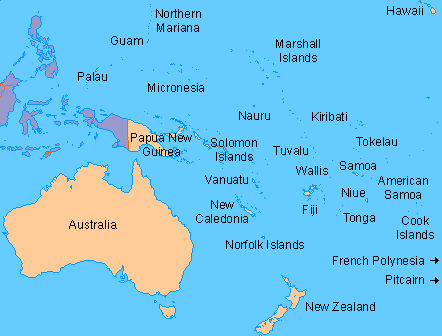Thinking About Melanesia—A Start
Ambassador C. Steven McGann (retired)

Countries throughout Melanesia have recently been the subject of international headlines. From China’s leasing of the Solomon Islands territory of Tulagi to the much discussed independence vote in Bougainville , it is clear that this region is of critical importance. Washington should look anew at its relations with Pacific Island Countries (PICs), particularly as it begins to focus greater attention on the important role of the Melanesian states in Pacific architecture.
For the purposes of this discussion, we might consider Melanesia in a broad sense, including all players involved in the Melanesian Spearhead Group : Papua New Guinea, Solomon Islands, Vanuatu, and Fiji (sovereign states); East Timor and West Papua (observers); Indonesia (associated member); and New Caledonia (political party). Revitalizing civil-military cooperation with the Melanesia sub-region would serve to strengthen these ties.
The recent referendum in Bougainville that set in motion the independence of an important sub-regional country with significant resources cannot be overlooked. Nor can the ongoing self-governance discussions in New Caledonia be overlooked in determining a sub-regional security cooperation framework. At the same time, such a sub-regional security cooperation framework must address the particular needs of each country as they set their governance and economic development priorities. Indeed, the United States would do well to listen to Melanesian states for guidance on their individual priorities, particularly as Chinese encroachment rests increasingly upon the insecurities of small Pacific states.
Beyond constructive attention to the region, additional focus on the role of multilateral cooperation and coordination is required. The United States played an important role in helping to construct a viable regional architecture in the post-World War II era. The critical pieces of this architecture are hosted by Melanesian countries and include the Secretariat of the Pacific Community (SPC), the Forum Fisheries Agency (FFA), the Pacific Islands Forum (PIF) and the Melanesian Spearhead Group (MSG). The United States has long-standing formal relations with the SPC and FFA and a partnership with the PIF and is broadening its engagement with the MSG. The Pacific Island Development Forum based in Suva, Fiji should also be engaged as we consider strengthening relations with Melanesia.
The MSG has an ambitious regional integration agenda that includes Indonesia and Timor-Leste, as noted above. Its goals under the framework of governance and sustainable development include cooperation on climate change, security, trade, investment and economic cooperation, fisheries, culture and sports — all of which are consistent with US activities in the region. Security assistance is the linchpin of US Pacific Command regional activities. The annual Pacific Partnership exercise and humanitarian assistance in response to natural disasters in the region are essential components of regional cooperation, particularly with respect to Melanesian countries. The Pacific Island Development Program based in the East-West Center in Honolulu are important conveyors of inter-governmental and non-governmental cooperation for PIC’s.
US interest in pursuing joint facilities with Papua New Guinea and Australia in Manua Province should be seen in the context of broader sub-regional security assistance and cooperation efforts that complement the overall development goals of PIC’s without detracting from or surpassing existing development efforts of partner countries. Australia and New Zealand have existing development programs that would complement such a broader interpretation of US engagement with PIC’s. France and the United Kingdom have established territorial and Commonwealth relations that provide guideposts and benchmarks for cooperation.
US security cooperation and assistance should look to current Australia and New Zealand programs that overlap with it broader objectives. Resilience and humanitarian assistance/disaster response engagement is well underway. Trade and labor mobility initiatives would be geared to support maritime security and strengthen infrastructure for future ports and aviation facilities. Education programs would identify building capacity for future communication and information-sharing while supporting immediate vocational training to undergird new economic activities to fill gaps in the skilled and semi-skilled workforce. Melanesian countries would greatly benefit from securing trade and higher education providers from a wider donor network to further develop the local, regional and national workforces throughout the region should be a stated goal of increased security assistance and cooperation.
As noted above, US efforts must also incorporate the immediate concerns of PIC’s. The development needs of Manus Island, for instance, must be addressed in connection with security infrastructure. Sustainable development frameworks such as gender-focused criteria developed in the National Action Plan on Women, Peace, and Security must also be considered. As such the US would offer a path of positive development that meets strategic objectives but aligns with local needs and wants. This approach should also lay the ground rules for building an attractive local brand for future development, and for developing innovative solutions that can be “sustained” by the people of Melanesia writ large. This also could serve as a global best practice example among developing nations in combining and building civilian and defence-related economic opportunities.
The US through INDOPACOM should develop mechanisms that allows working closely with government, national and provincial agencies ensuring goals and objectives align appropriately. Understanding the impact of increased security cooperation and assistance on the local populace requires understanding their aspirations and priorities for local development as a key element in the overall alignment of the region. Moreover, it would help accelerate global integration and participation, as well as deliver tangible and sustainable outcomes in the Pacific.